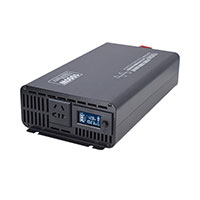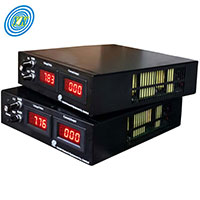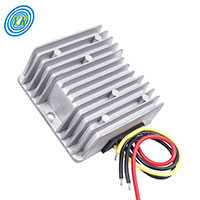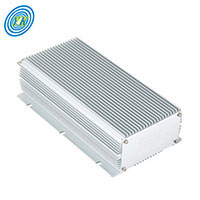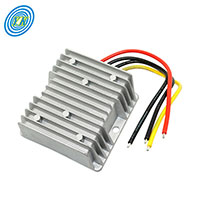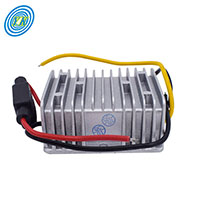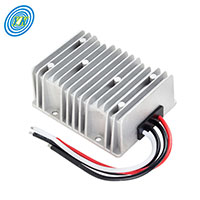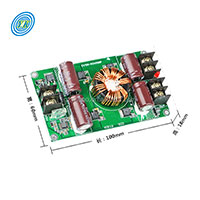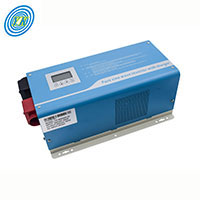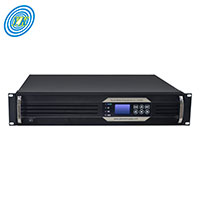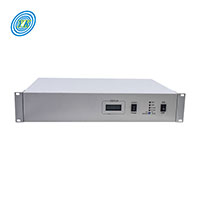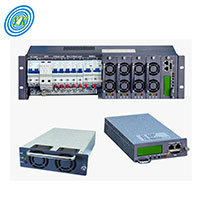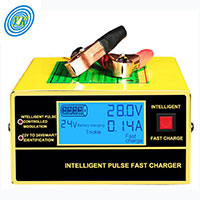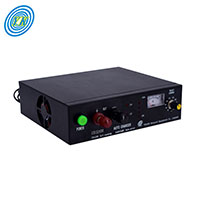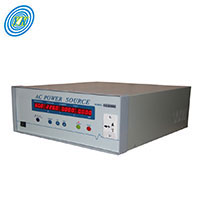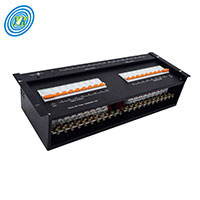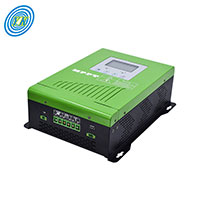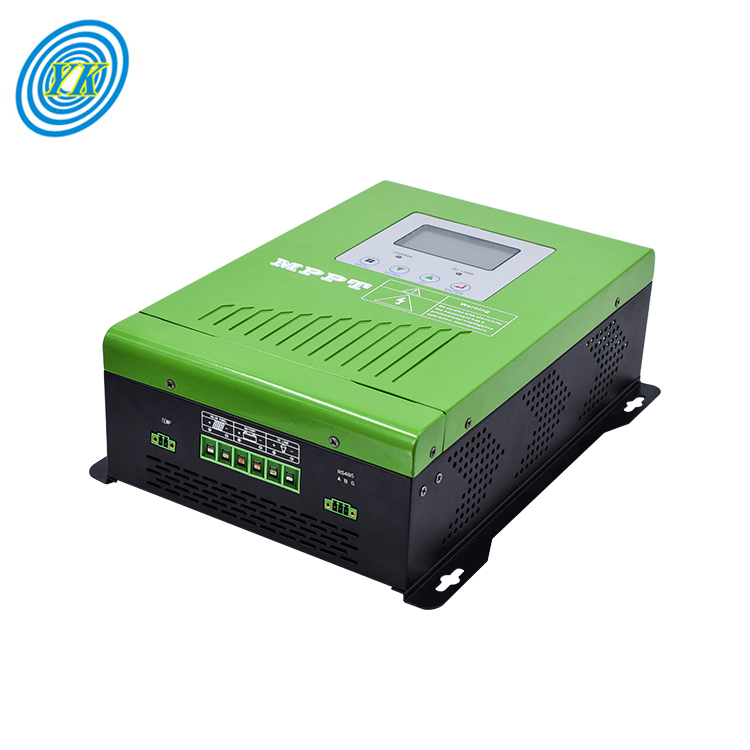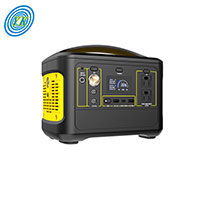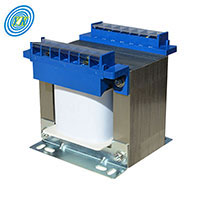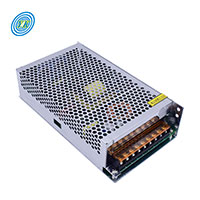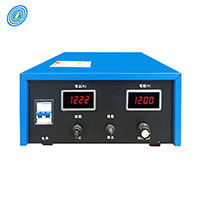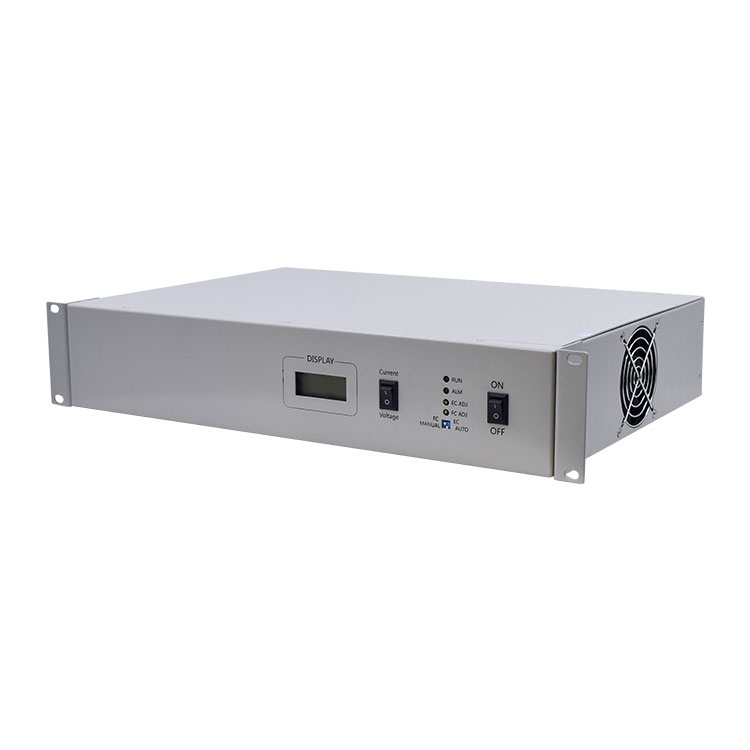
The Role of Rack-Mounted DC Converters in Electric Vehicle Charging Stations
Click: 845 Date: 09/19/2023 3::40::41 PM
The Role of Rack-Mounted DC Converters in Electric Vehicle Charging StationsAs we transition towards a more sustainable future, electric vehicles (EVs) have become an integral part of this journey. However, their widespread adoption is largely dependent on the availability and efficiency of EV charging stations. This is where rack-mounted DC converters come into play, serving as a crucial component in these stations.What are Rack-Mounted DC Converters?Rack-mounted DC converters are devices that convert input DC power from one voltage level to another. They are typically designed to be mounted on a standard 19-inch rack, providing a compact and efficient solution for power conversion. These devices are highly reliable and offer the flexibility to be used in a variety of applications, including EV charging stations.Importance in EV Charging StationsIn EV charging stations, rack-mounted DC converters perform the critical role of converting the high-voltage DC power from the grid or renewable energy sources into a lower voltage suitable for charging the EV's battery. Without these converters, the charging process would not be efficient or safe.The DC converters are also responsible for ensuring that the power flow is controlled and stable, preventing any potential damage to the battery due to overcharging or undercharging. Additionally, they facilitate the communication between the charging station and the vehicle, allowing for the optimization of the charging process based on the battery's status.Enhancing Efficiency and FlexibilityRack-mounted DC converters not only ensure the safe and efficient charging of EVs but also offer greater flexibility in the design and implementation of charging stations. For instance, they enable the integration of renewable energy sources, such as solar or wind power, into the charging infrastructure. This is particularly important as we strive to reduce our dependence on fossil fuels and move towards a more sustainable energy future.Furthermore, their compact size and scalability make them an ideal choice for both small-scale residential charging stations and large-scale public charging networks. They can be easily expanded or upgraded to meet the growing demand for EV charging, ensuring that the infrastructure keeps pace with the increasing number of electric vehicles on the road.ConclusionIn conclusion, rack-mounted DC converters play a pivotal role in the operation of EV charging stations. They ensure the efficient and safe charging of electric vehicles, contribute to the integration of renewable energy sources, and offer the flexibility needed to expand and adapt the charging infrastructure. As the adoption of electric vehicles continues to grow, the importance of these converters in our transition towards a sustainable future cannot be overstated.
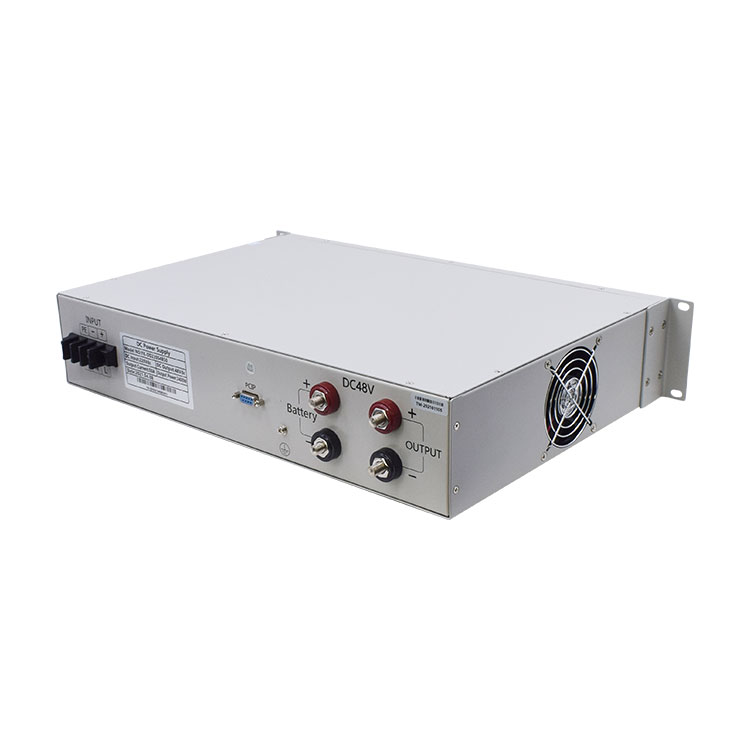
Revolutionizing Telecommunications with Rack-Mounted DC Converters
Click: 863 Date: 09/19/2023 3::09::44 PM
Revolutionizing Telecommunications with Rack-Mounted DC ConvertersIn the telecommunications industry, maintaining steady and reliable power supply is critical. This is where Rack-Mounted DC Converters come into play. With their ability to provide continuous power supply and support bidirectional power flow, these converters are revolutionizing the telecommunications industry.Introduction to Rack-Mounted DC ConvertersRack-Mounted DC Converters are power conversion devices that are designed to fit into a standard electronic rack. These devices are used to convert direct current (DC) from one voltage level to another. They are commonly used in various industries including telecommunications, data centers, and industrial automation. In the telecommunications industry, they play a crucial role in ensuring a steady and reliable power supply for various devices and systems.Role in TelecommunicationsIn the telecommunications sector, Rack-Mounted DC Converters are used to power various devices such as servers, routers, switches, and other network equipment. These devices require a steady DC voltage, which is provided by the DC converters.Bidirectional power flow is one of the key features of these converters. This allows for the grid-to-vehicle interaction (G2V) as well as the vehicle-to-grid (V2G) mode. The V2G technology can significantly improve the overall reliability of the distribution grid. In case of system failure, peak load demand, or other unexpected scenarios, the EVs can be used as a backup generation, supplying the energy back to the grid when needed. This technology can also improve the power quality, stability, and operating cost of the distribution network.Benefits of Rack-Mounted DC Converters in TelecommunicationsRack-Mounted DC Converters offer several benefits in the telecommunications industry:Reliability: These converters provide a continuous power supply, ensuring that telecommunications equipment operates without interruption. This is critical in maintaining communications and data transfer.Efficiency: Rack-Mounted DC Converters are designed to deliver high efficiency, reducing energy consumption and operating costs.Flexibility: These converters can support varying voltage levels, making them suitable for different types of telecommunications equipment.Space Saving: The rack-mount design of these converters saves valuable floor space, which is particularly beneficial in data centers and other facilities where space is at a premium.Future TrendsWith advancements in technology, the role of Rack-Mounted DC Converters in telecommunications is expected to grow. As the demand for data and the need for reliable communications continue to increase, these converters will play an even more critical role in ensuring the smooth operation of telecommunications systems.
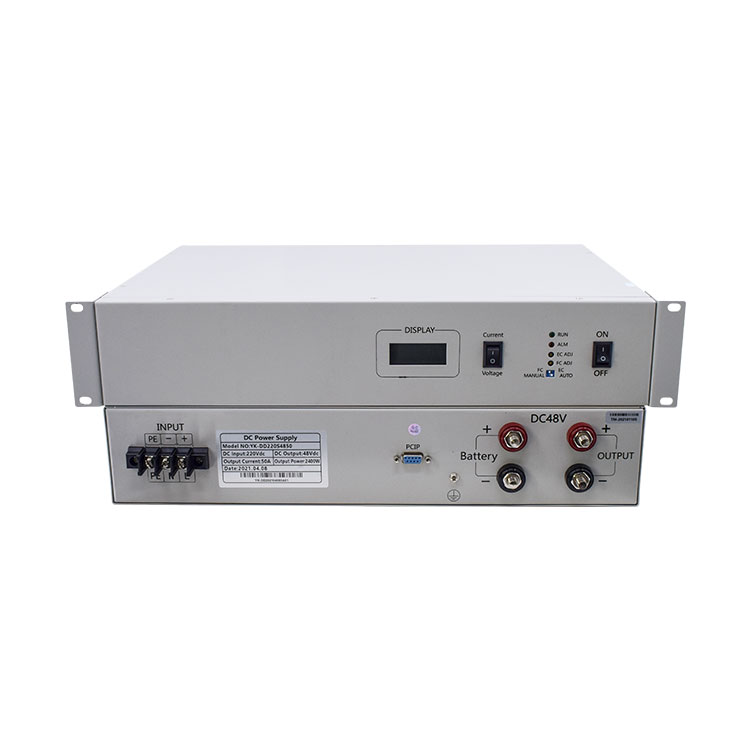
Rack-Mounted DC Converters: The Powerhouse of Data Centers
Click: 856 Date: 09/18/2023 2::16::40 PM
Rack-Mounted DC Converters: The Powerhouse of Data CentersData centers are the backbone of the digital world, and their efficient operation is crucial to a wide array of industries. One essential component that ensures the smooth functioning of these data centers is the Rack-Mounted Direct Current (DC) Converter.Powering the Data CentersDC converters are critical for converting incoming Alternating Current (AC) power into DC power, which is required by the servers and other components in the data center. Rack-mounted DC converters not only perform this essential function but also offer the advantage of compactness, ease of installation, and integration with the standard 19” rack systems commonly used in data centers.Meeting Diverse Power RequirementsRack-mounted DC converters come in a wide range of power ratings to meet the diverse needs of data centers. From low power requirements of 15W to high power needs up to 5000W, these converters offer a versatile solution for different power demands. Moreover, these converters can be designed to provide custom solutions for specific requirements, making them a flexible choice for any data center setup.Ensuring Reliability and EfficiencyReliability is a critical factor in data center operations, and rack-mounted DC converters deliver on this front. These converters are built to withstand the demanding conditions of a data center environment, ensuring stable and reliable power supply heliosps.com. Additionally, their design allows for efficient heat dissipation, which is essential for maintaining the longevity and performance of the converters.The Future of Data Center PoweringWith the continuous advancement in technology, the demand for reliable and efficient power solutions in data centers is set to increase. Rack-mounted DC converters, with their versatility, reliability, and efficiency, are well-positioned to meet this demand. As more data centers move towards higher density setups and seek more energy-efficient solutions, the role of rack-mounted DC converters as the powerhouse of data centers will only continue to grow.In conclusion, rack-mounted DC converters are a critical component in the data center power infrastructure. Their ability to meet diverse power requirements, ensure reliability, and improve efficiency makes them an ideal choice for powering the digital world's backbone.
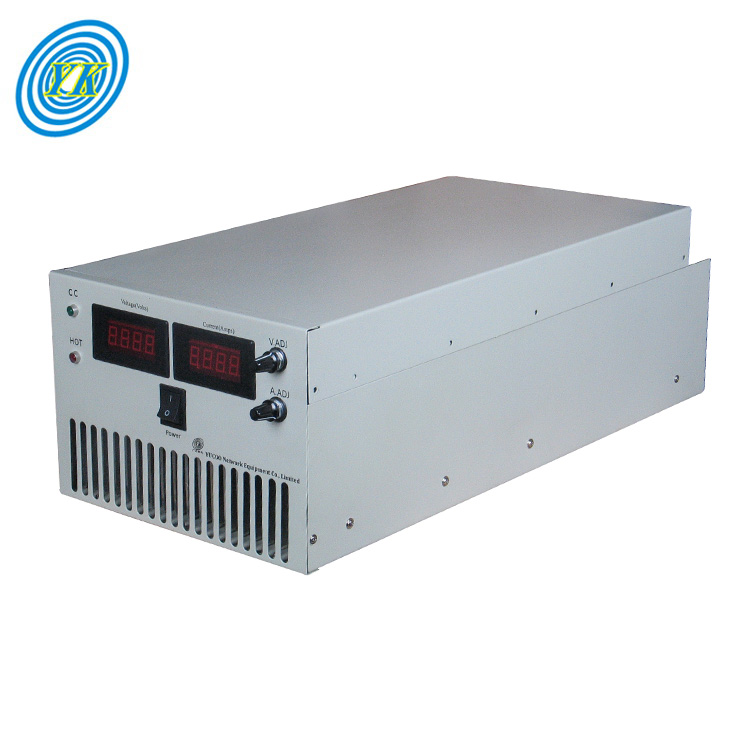
Thinking Outside the Box: Creative Applications of Variable Power Supplies in Art Installations
Click: 685 Date: 09/18/2023 2::00::45 PM
Thinking Outside the Box: Creative Applications of Variable Power Supplies in Art InstallationsVariable power supplies, often seen as a purely technical component, have emerged as a fascinating tool in the realm of art installations. Artists are increasingly leveraging the versatility of these devices to bring their creative visions to life. This article explores some unique and creative applications of variable power supplies in art installations.Art Installations: A Brief IntroductionArt installations have grown immensely popular over the last few decades and have become an important focus for artists, art institutions, and art collections. Installation artworks often aim to transform the viewer’s perception of space, making them deeply immersive. Some installations are silent, others are interactive and require the audience’s participation and engagement to achieve an impact and be interpreted.Variable Power Supplies: The New Artistic MediumVariable power supplies, with their ability to adjust voltage and current output, offer artists a unique medium for expressing their creativity. Artists can manipulate light, sound, movement, and other elements in their installations by controlling the power supply. This opens up a world of possibilities, allowing artists to create installations that interact with viewers, respond to the environment, or change over time.For example, an installation could use variable power supplies to control a network of LED lights, creating a dynamic light display that changes in response to the viewer's movements. Similarly, an installation could use variable power supplies to power a series of motors, creating kinetic sculptures that move and change shape. The use of variable power supplies in such installations allows for a high degree of control and precision, enabling artists to realize their creative visions in ways that were not previously possible.Case Studies of Variable Power Supplies in Art InstallationsInteractive Art Installation: Augmented EncountersOne interesting example of the use of variable power supplies in art installations is the "Augmented Encounters" project at Penn State. This interactive installation used variable power supplies to control a series of electronic components, creating an immersive and participatory experience for viewers. The participants used the art techniques of Shibori indigo dying (Japanese manual tie-dying) and repoussé (ornamental metal with patterns made in relief by hammering or pressing on the reverse side). To create an augmented-reality component, they embedded crafted spoken-word messages in the piece, which users can access with a QR code.10.000 Moving Cities by Marc LeeAnother example is the "10.000 Moving Cities" installation by Marc Lee. This interactive installation uses variable power supplies to control a series of projectors and screens, creating a dynamic and immersive environment that changes in response to the viewer's interactions. The installation uses Internet feeds from various cities around the world, creating a constantly changing landscape of images and sounds.ConclusionThe innovative use of variable power supplies in art installations illustrates how technology can be a powerful tool for artistic expression. By controlling and manipulating electrical power, artists can create dynamic and interactive installations that engage viewers in new and exciting ways. As technology continues to evolve, it will be exciting to see how artists continue to leverage variable power supplies and other technical components in their work.
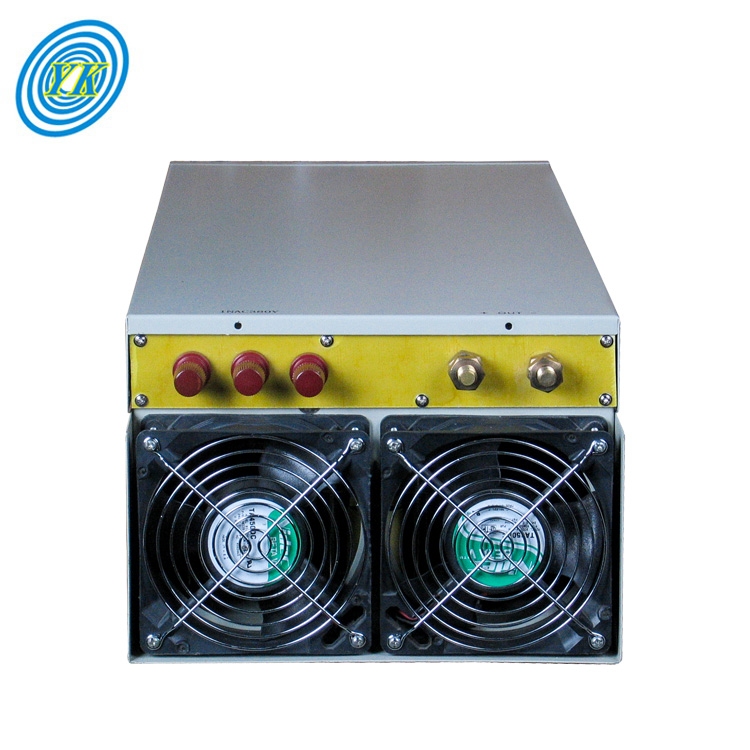
Enhancing Efficiency: Variable Power Supplies in HVAC Systems
Click: 985 Date: 09/15/2023 4::21::10 PM
Enhancing Efficiency: Variable Power Supplies in HVAC SystemsIntroductionHeating, Ventilation, and Air Conditioning (HVAC) systems are vital components of modern buildings, contributing to the comfort and health of occupants. However, these systems can consume a significant amount of energy, which can lead to high operating costs and environmental impact. A promising solution to these challenges is the use of variable power supplies (VPS) in HVAC systems. This article will delve into how variable power supplies can enhance the efficiency of HVAC systems.The Role of Variable Power SuppliesVariable power supplies allow the power delivered to a load to be adjusted based on the demand. This means that instead of running at full power all the time, the HVAC system can modify its power consumption based on factors such as outdoor temperature, occupancy, and time of day. This ability to adjust power consumption in real-time can significantly reduce energy usage and costs.Benefits of Variable Power Supplies in HVAC SystemsEnergy EfficiencyWith a variable power supply, an HVAC system can operate at lower power levels when demand is low, thereby reducing energy consumption. This can result in significant savings on energy bills.Improved ComfortVariable power supplies can provide more consistent temperature control by making small adjustments to power levels. This avoids the temperature swings that can occur with traditional on/off control methods, leading to improved comfort for building occupants.Extended Equipment LifeBy reducing the number of on/off cycles, variable power supplies can extend the life of HVAC equipment. Fewer cycles mean less wear and tear on equipment, leading to lower maintenance costs and longer equipment lifespan.ConclusionIn conclusion, variable power supplies represent a promising technology for enhancing the efficiency of HVAC systems. By allowing these systems to adjust their power consumption based on demand, variable power supplies can reduce energy usage, improve comfort, and extend equipment life. As energy costs continue to rise and environmental concerns become increasingly urgent, the adoption of variable power supplies in HVAC systems is likely to become more widespread.
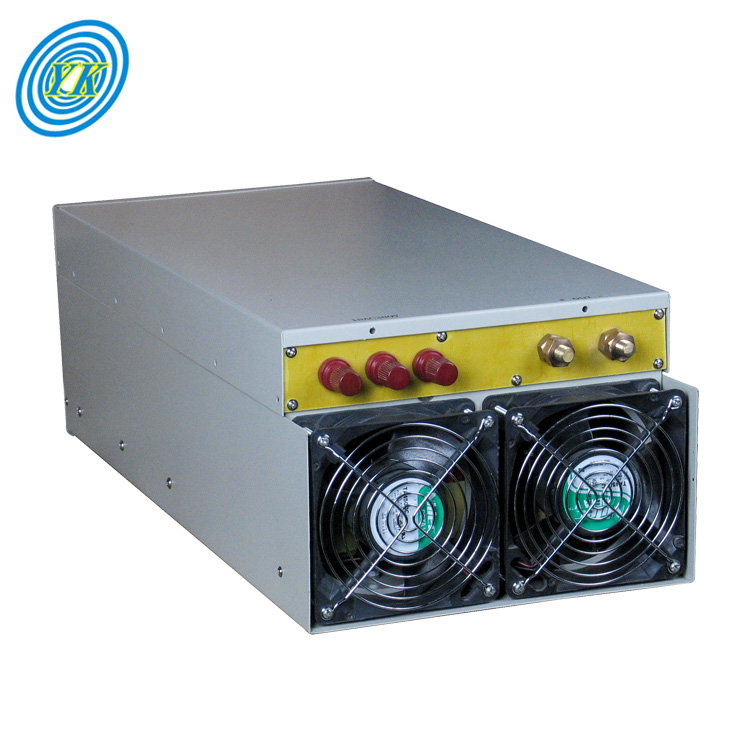
Illuminating Possibilities: Variable Power Supplies in LED Lighting Systems
Click: 803 Date: 09/15/2023 4::11::24 PM
Illuminating Possibilities: Variable Power Supplies in LED Lighting SystemsIntroductionVariable power supplies have found a significant application in LED lighting systems, providing promising solutions for energy efficiency and sustainability. With the technology's inherent flexibility, it has become a critical element in optimizing LED lighting for various applications, including commercial, industrial, and residential settings. This article explores the role of variable power supplies in LED lighting systems, focusing on their potential for energy conservation, performance improvement, and innovative applications.The Role of Variable Power Supplies in LED LightingVariable power supplies allow for the adjustment of voltage and current supplied to an LED lighting system. This flexibility enables the fine-tuning of the LED's brightness and color, enhancing the lighting quality and user experience. It also enables the system to adapt to different power conditions, ensuring optimal performance and longevity of the LEDs.Variable power supplies also play a critical role in energy efficiency. By adjusting the power supply to the exact needs of the LED system, energy waste can be minimized. This is particularly relevant in applications like solar-powered LED lighting, where the efficient use of renewable energy is crucial. For example, a solar photovoltaic power plant can directly convert sunlight into electricity, which then powers the LED lighting system. The variable power supply ensures the LED system operates optimally under varying sunlight conditions, maximizing the utilization of solar energy.Benefits and ApplicationsThe use of variable power supplies in LED lighting systems brings numerous benefits. Firstly, it enhances the energy efficiency of the lighting system, reducing energy consumption and costs. Secondly, it improves the performance and lifespan of LEDs by protecting them from power fluctuations and overloads. Finally, it offers flexibility in lighting control, allowing for the adjustment of brightness and color based on user preferences or application needs.Variable power supplies in LED lighting have found applications in a wide range of fields. In the commercial sector, they are used in office buildings and shopping malls to achieve energy-efficient, high-quality lighting. In the industrial sector, they are applied in manufacturing facilities and warehouses for reliable, adaptable lighting. In the residential sector, they are used in homes for customizable, energy-saving lighting. Moreover, they are also applied in outdoor lighting, vehicle lighting, and even artistic lighting installations, demonstrating their versatility and potential for innovation.Future ProspectsThe future of variable power supplies in LED lighting systems looks promising. With the ongoing advancements in power electronics and LED technology, we can expect further improvements in efficiency, performance, and functionality. Moreover, as the demand for sustainable energy solutions grows, the application of variable power supplies in renewable energy-powered LED lighting systems is set to expand.In conclusion, variable power supplies play a vital role in LED lighting systems, offering flexibility, efficiency, and improved performance. As the technology continues to evolve, we can expect to see more innovative and impactful applications in the future.
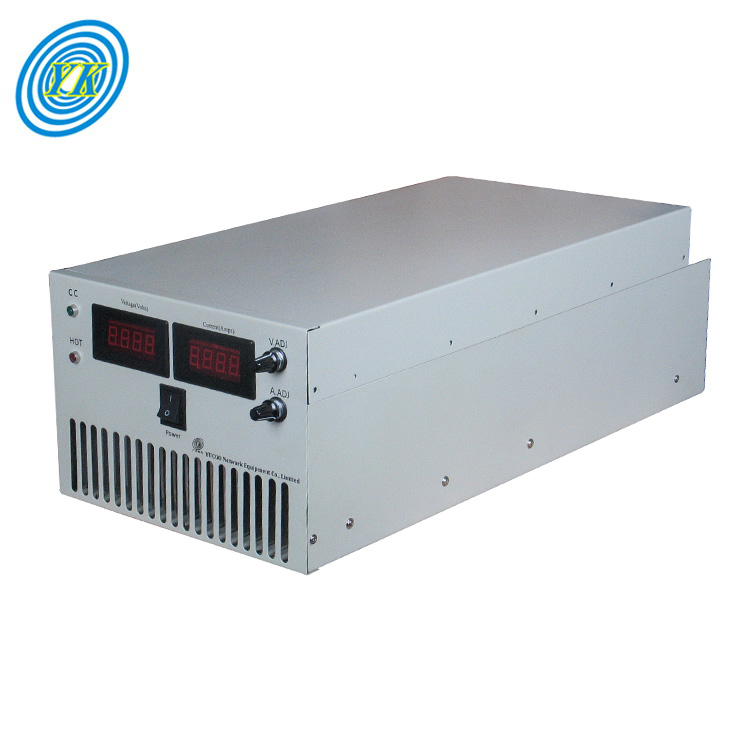
Uninterrupted Power: Variable Power Supplies in Data Centers and Server Farms
Click: 723 Date: 09/15/2023 3::50::29 PM
Uninterrupted Power: Variable Power Supplies in Data Centers and Server FarmsIntroductionUninterruptible Power Supply (UPS) systems are critical equipment designed to reliably feed sensitive and crucial loads such as data centers, communication networks, and IT servers. While conventional UPS systems, including online, offline, and line-interactive UPSs, are prevalent in the industry, there is a continuous need for development to reduce cost and volume, and enhance efficiency and reliability.The Growing Importance of UPS in Data CentersThe role of UPS systems in data centers and server farms is more important than ever. As digital technologies continue to evolve and the demand for data storage and processing increases, the need for uninterrupted, reliable power supply becomes a priority. Any power disruption can lead to significant data loss, service downtime, and potentially huge financial implications.Variable Power Supplies: A Game ChangerVariable power supplies come into the picture as a game-changer in this context. They provide a flexible and adaptable power solution that can be adjusted based on the load requirements of the data center. This flexibility can lead to more efficient power usage, potentially lowering operational costs and reducing the environmental impact.UPS System Design in Data CentersThe design of UPS systems in data centers is a complex process that involves careful consideration of the data center's requirements, the UPS's capabilities, and the potential risks and challenges. The design process typically includes defining the power capacity needs, determining the UPS configuration, selecting the UPS type, and planning for potential power failures or disruptions.Future DirectionsAs the demand for data continues to grow, so does the need for reliable and efficient power supply solutions. Future research directions include modeling the lifetime of UPS systems, monitoring their condition, and predicting failures. Industrial, experimental, and hardware-in-the-loop tests and validation are also key areas of focus.In conclusion, variable power supplies in data centers and server farms play a crucial role in maintaining uninterrupted power, ensuring the smooth operation of digital services, and paving the way for more sustainable and efficient power management solutions.
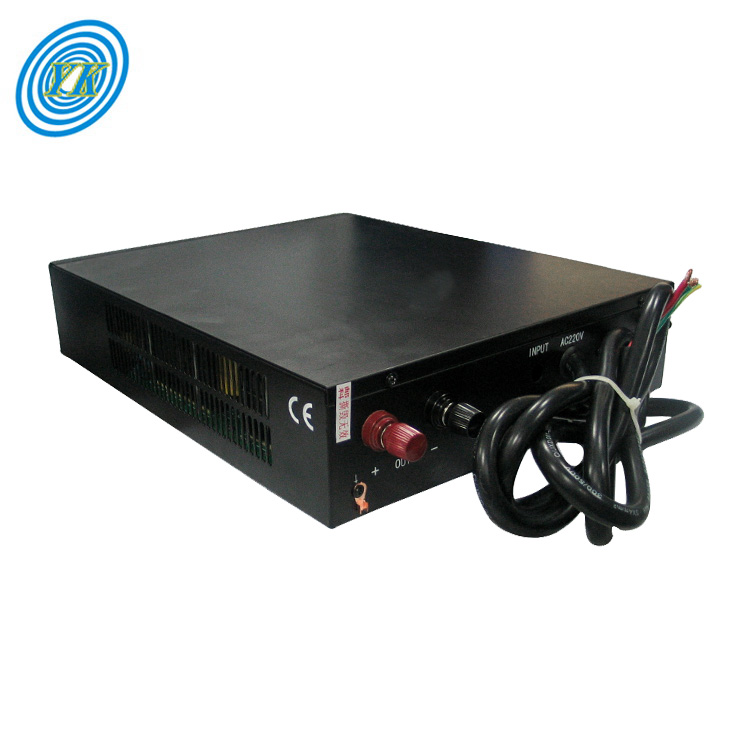
Precision and Flexibility: Variable Power Supplies in Industrial Automation
Click: 841 Date: 09/15/2023 3::39::09 PM
Precision and Flexibility: Variable Power Supplies in Industrial AutomationIndustrial automation has revolutionized various sectors, offering precision, flexibility, and efficiency. One of the key components driving this revolution is the variable power supply. This article will explore how variable power supplies are utilized in industrial automation, enhancing precision and flexibility in the process.Variable Power Supplies and Their Role in Industrial AutomationVariable power supplies, also known as adjustable or regulated power supplies, allow the user to adjust the output voltage within a certain range. They are essential in industrial automation as they provide the power necessary for various operations and processes. They also ensure the safe and efficient operation of machinery by providing a steady and reliable power source.In industrial automation, variable power supplies are used in a wide range of applications, such as powering Programmable Logic Controllers (PLCs), sensors, and other electronic devices. They are also crucial in testing and measurement systems, where precision and high resolution are required.Precision in Industrial AutomationPrecision is a critical factor in industrial automation. Variable power supplies contribute to this by providing accurate voltage levels, leading to precise control and operation of machinery and equipment. For example, in test and measurement systems, the accuracy of a variable power supply improves the overall accuracy and granularity of the equipment, leading to finer control and excitation of external sources and nano-actuators.In PLCs, variable power supplies are crucial for the accurate operation of the controller. PLCs are digital computers used for industrial automation to control various types of machines or processes. They are designed for multiple arrangements of digital and analog inputs and outputs, extended temperature ranges, immunity to electrical noise, and resistance to vibration and impact.Flexibility in Industrial AutomationFlexibility is another essential aspect of industrial automation. Variable power supplies offer flexibility by allowing the user to adjust the output voltage according to the requirements of the device or system being powered. This capability is particularly beneficial in situations where different devices require different voltage levels.For instance, in PLCs, variable power supplies provide the flexibility to power various components such as the CPU module, input and output modules, and other additional components like network interfaces and communication adapters.Moreover, the trend in industrial power supplies is moving towards compact, high efficiency, high power density solutions. These solutions provide robust and reliable power for industrial power needs, offering flexibility in terms of installation and operation.ConclusionIn conclusion, variable power supplies play a significant role in industrial automation, offering precision and flexibility. They provide the necessary power for various operations, contribute to the accuracy of systems, and offer the flexibility of adjustable voltage levels. As industrial automation continues to evolve, the importance of variable power supplies in this sector is set to increase.
